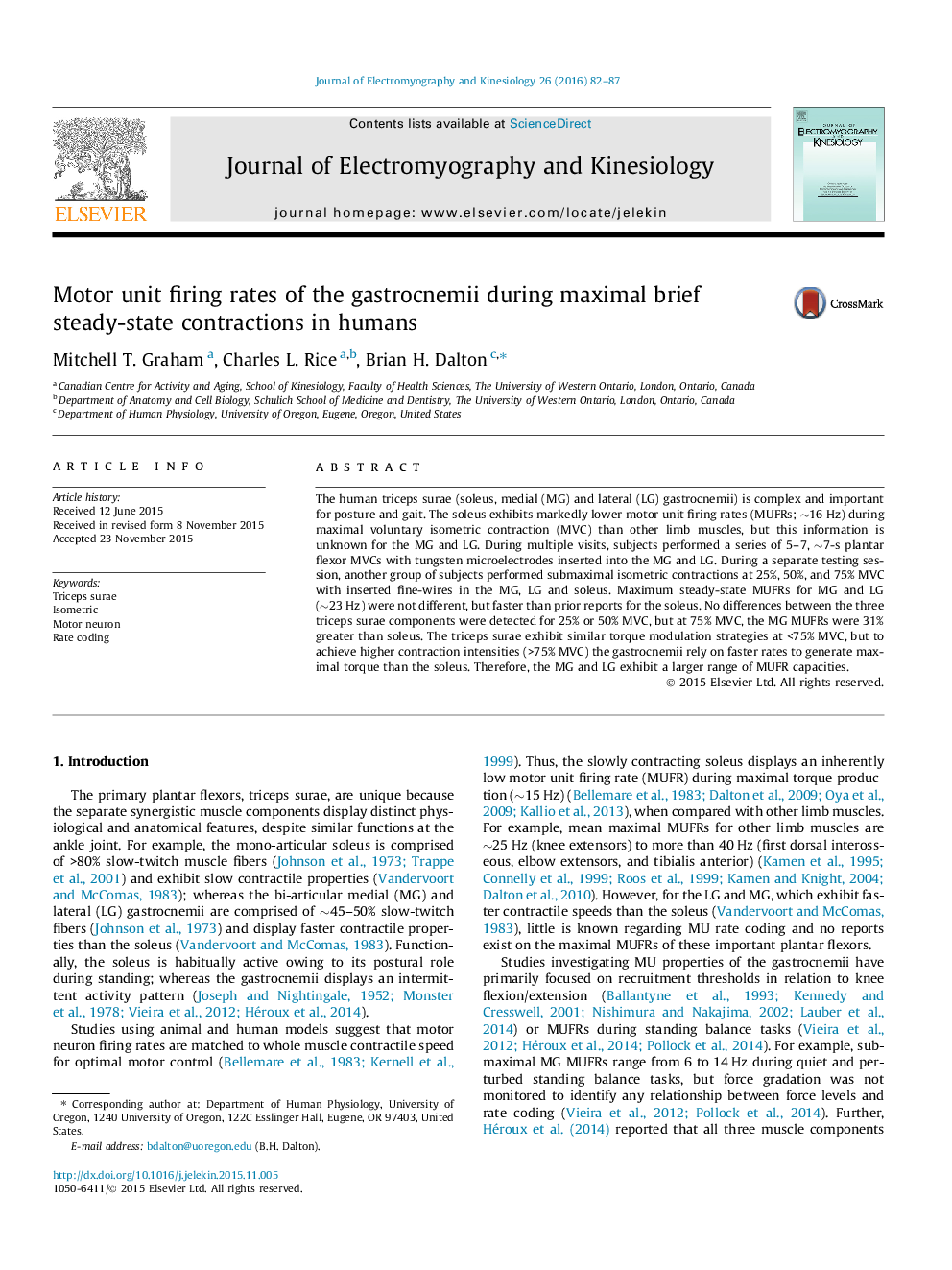| Article ID | Journal | Published Year | Pages | File Type |
|---|---|---|---|---|
| 4064440 | Journal of Electromyography and Kinesiology | 2016 | 6 Pages |
The human triceps surae (soleus, medial (MG) and lateral (LG) gastrocnemii) is complex and important for posture and gait. The soleus exhibits markedly lower motor unit firing rates (MUFRs; ∼16 Hz) during maximal voluntary isometric contraction (MVC) than other limb muscles, but this information is unknown for the MG and LG. During multiple visits, subjects performed a series of 5–7, ∼7-s plantar flexor MVCs with tungsten microelectrodes inserted into the MG and LG. During a separate testing session, another group of subjects performed submaximal isometric contractions at 25%, 50%, and 75% MVC with inserted fine-wires in the MG, LG and soleus. Maximum steady-state MUFRs for MG and LG (∼23 Hz) were not different, but faster than prior reports for the soleus. No differences between the three triceps surae components were detected for 25% or 50% MVC, but at 75% MVC, the MG MUFRs were 31% greater than soleus. The triceps surae exhibit similar torque modulation strategies at <75% MVC, but to achieve higher contraction intensities (>75% MVC) the gastrocnemii rely on faster rates to generate maximal torque than the soleus. Therefore, the MG and LG exhibit a larger range of MUFR capacities.
